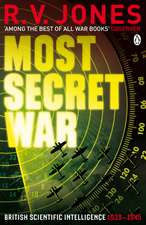Women's Voices in Ireland: Women's Magazines in the 1950s and 60s
Autor Caitriona Clearen Limba Engleză Paperback – 28 iun 2017
| Toate formatele și edițiile | Preț | Express |
|---|---|---|
| Paperback (1) | 256.02 lei 6-8 săpt. | |
| Bloomsbury Publishing – 28 iun 2017 | 256.02 lei 6-8 săpt. | |
| Hardback (1) | 772.74 lei 6-8 săpt. | |
| Bloomsbury Publishing – 16 dec 2015 | 772.74 lei 6-8 săpt. |
Preț: 256.02 lei
Preț vechi: 330.40 lei
-23% Nou
Puncte Express: 384
Preț estimativ în valută:
48.99€ • 51.05$ • 40.56£
48.99€ • 51.05$ • 40.56£
Carte tipărită la comandă
Livrare economică 03-17 aprilie
Preluare comenzi: 021 569.72.76
Specificații
ISBN-13: 9781350039964
ISBN-10: 1350039969
Pagini: 208
Ilustrații: 16 bw illus
Dimensiuni: 234 x 158 x 16 mm
Greutate: 0.29 kg
Ediția:NIPPOD
Editura: Bloomsbury Publishing
Colecția Bloomsbury Academic
Locul publicării:London, United Kingdom
ISBN-10: 1350039969
Pagini: 208
Ilustrații: 16 bw illus
Dimensiuni: 234 x 158 x 16 mm
Greutate: 0.29 kg
Ediția:NIPPOD
Editura: Bloomsbury Publishing
Colecția Bloomsbury Academic
Locul publicării:London, United Kingdom
Caracteristici
Women's magazines provide a lens through which to discuss a variety of topics including politics, religion, women's work, marriage, family and sexuality in 20th-century Ireland
Notă biografică
Caitriona Clear lectures on European and Irish women's history, the history of poverty and institutions, general political history, and oral history at the National University of Ireland, Galway, Ireland. Her most recent book is Social Change and Everyday Life in Ireland 1850-1922 (2007).
Cuprins
Introduction: 'Advice, patterns, etc': Women, magazines and Ireland in the 1950s and 60s.1. The Readership and Audience of Woman's Life 1951-92. The problem page in Woman's Life 1951-93. Letters to Woman's Way 1963-9 Part 14. Letters to Woman's Way Part 25. Letters to Woman's Way Part 36. The Problem page in Woman's Way 1963-9 Part 17. Problem page in Woman's Way Part 28. Problem page in Woman's Way Part 3Conclusion: Hearing Their Own Names AgainIndex
Recenzii
This book will be of crucial importance in furthering debates around women's lives in twentieth century Ireland . and add needed archival richness to debates on women's lives since partition.
Clear's well-researched book gives an interesting snapshot of a relatively recent repressed time.
This book is successful and significant on a number of levels. It provides a rich and detailed account of popular women's magazines in Ireland in the 1950s and 1960s ... The book also provides a much more nuanced account of social and cultural change in Ireland in these two decades adding much to our understandings of modern Irish history and the lives of Irish women in particular. Clear writes in an accessible manner and the inclusion of images from the magazines and the engaging content ensures that this publication will appeal not only to academics and students of history but also to those who 'never thought they were interested in history at all'.
Caitriona Clear provides an interesting and interdisciplinary perspective on select women's magazines at a pivotal time in the country's history . The volume provides some new insights, linking the readers' letters, problems pages, and "agony aunts" to a broader women's history context that complements existing scholarship of Irish press history.
Clear's well-researched book gives an interesting snapshot of a relatively recent repressed time.
This book is successful and significant on a number of levels. It provides a rich and detailed account of popular women's magazines in Ireland in the 1950s and 1960s ... The book also provides a much more nuanced account of social and cultural change in Ireland in these two decades adding much to our understandings of modern Irish history and the lives of Irish women in particular. Clear writes in an accessible manner and the inclusion of images from the magazines and the engaging content ensures that this publication will appeal not only to academics and students of history but also to those who 'never thought they were interested in history at all'.
Caitriona Clear provides an interesting and interdisciplinary perspective on select women's magazines at a pivotal time in the country's history . The volume provides some new insights, linking the readers' letters, problems pages, and "agony aunts" to a broader women's history context that complements existing scholarship of Irish press history.










